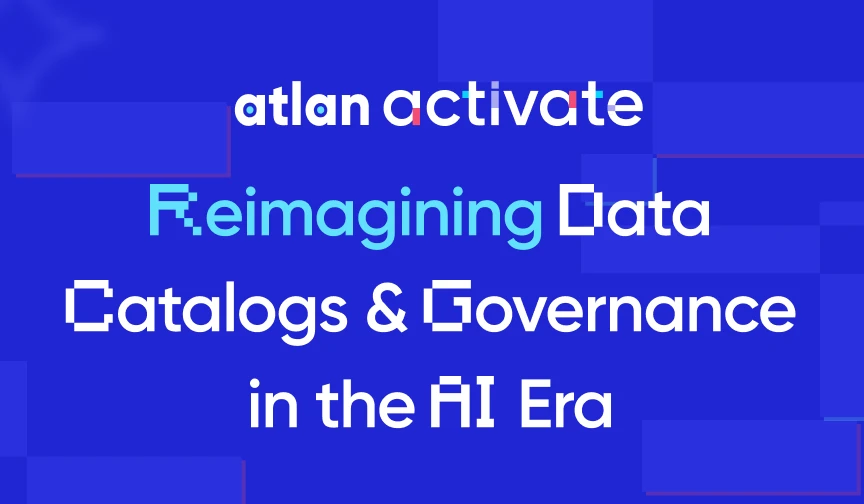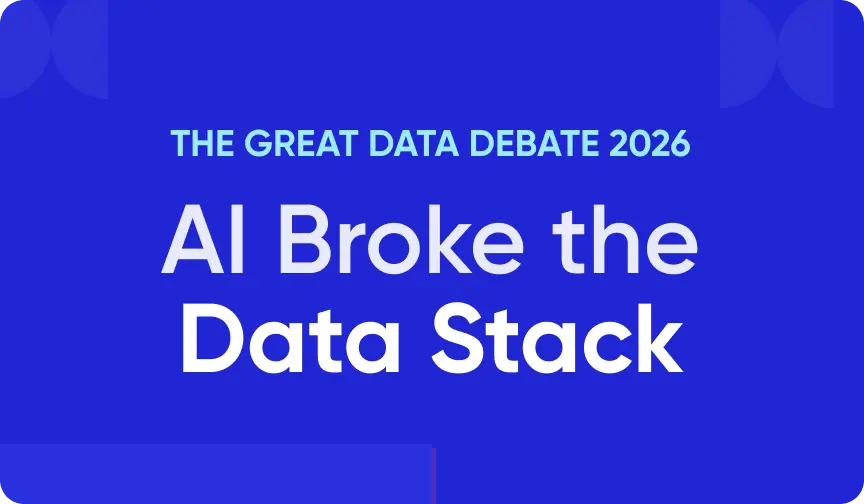Cross-Border Data Transfers: How to Stay Compliant Globally in 2025

Last Updated on: June 24th, 2025 | 9 min read
Unlock Your Data's Potential With Atlan

Quick Answer: What are cross-border data transfers?
Permalink to “Quick Answer: What are cross-border data transfers?”Cross-border data transfers involve moving personal or sensitive data from one country to another. These transfers are often subject to strict legal and regulatory controls, especially in sectors like finance and healthcare.
Common examples of cross-border data transfers include:
- Storing data in a cloud server located outside your country
- Remote access to data by employees or vendors in another country
- Sharing data with third-party processors or affiliates abroad
- Using software tools with servers in different jurisdictions
Cross-border transfers influence everything from cloud provider selection to decisions around global workforce and vendor access. Up next, we explore the mechanics, risks, and strategic implications of these transfers, and how to manage them effectively.
Table of contents
Permalink to “Table of contents”- Cross-border data transfers explained
- What are the key legal requirements for cross-border data transfers?
- How do cross-border data transfers shape business and data strategy?
- Why a metadata control plane is critical for cross-border data transfers
- Cross-border data transfers: Final thoughts
- Cross-border data transfers: Frequently Asked Questions (FAQs)
Cross-border data transfers explained
Permalink to “Cross-border data transfers explained”A cross-border data transfer occurs whenever personal or sensitive data moves outside the country where it was originally collected or stored. This can happen in various ways:
- Data storage in another country: Hosting data on cloud servers or infrastructure located outside the data’s origin jurisdiction.
- Remote access from abroad: When employees, contractors, or third-party partners access data from another country—even without physically moving the data.
- Data processing in a foreign jurisdiction: Performing actions such as analysis, profiling, or enrichment on data outside the original country.
- Electronic data transmission across borders: Sending data across international networks, including API calls, emails, and system-to-system integrations.
- Use of software tools with international infrastructure: Leveraging SaaS platforms or tools whose backend systems store or process data in other countries.
- Third-party service providers located overseas: Engaging external vendors, processors, or affiliates based in another jurisdiction to store, access, or process data.
- Cross-border financial transactions: International payment processing or fund transfers that involve transmitting personal or financial data, such as cardholder info or transaction logs.
What are the key legal requirements for cross-border data transfers?
Permalink to “What are the key legal requirements for cross-border data transfers?”Cross-border data transfers are subject to complex and evolving regulatory landscapes. Laws such as the EU’s General Data Protection Regulation (GDPR), California’s Consumer Privacy Act (CCPA) and Privacy Rights Act (CPRA), Brazil’s LGPD, and others impose strict requirements on how personal data is transferred across jurisdictions.
Non-compliance can result in regulatory scrutiny, fines, and reputational damage. Common legal mechanisms required for compliant transfers include:
- Standard Contractual Clauses (SCCs): SCCs are pre-approved legal templates used to safeguard data exported to countries without an adequacy decision.
- Binding Corporate Rules (BCRs): BCRs are internal, regulator-approved policies that authorize data movement within a multinational enterprise.
- Consent: In some regions, explicit user consent is required before personal data can be transferred abroad.
- Data localization requirements: Some jurisdictions mandate local storage or processing of sensitive categories like financial or health data.
What are some strategic risks and considerations for data leaders?
Permalink to “What are some strategic risks and considerations for data leaders?”For CDOs, governance leads, and compliance officers, cross-border data flows go beyond compliance, directly impacting enterprise architecture, vendor strategy, and operational efficiency.
Key considerations include:
- Regulatory exposure: Cross-border transfers are high-risk touchpoints during audits, investigations, or breach events.
- Loss of data control: Once data leaves national borders, it may be subject to foreign surveillance or weaker legal protections.
- Operational friction: Data localization laws and inconsistent legal frameworks can complicate global data access and integration.
- Governance complexity: Managing permissions, lineage, and access rights across jurisdictions increases the need for metadata-driven visibility and automation.
These considerations influence how platforms are architected, how metadata is managed, and how controls are enforced. Done well, cross-border compliance becomes a strategic enabler that supports global data collaboration without sacrificing data trust, security, or violating compliance requirements.
What happens when cross-border transfers go wrong? A €1.2 billion lesson
Permalink to “What happens when cross-border transfers go wrong? A €1.2 billion lesson”In April 2023, Meta Platforms Ireland was fined €1.2 billion, the largest penalty ever under the GDPR, by the Irish Data Protection Commission (DPC).
The fine was issued for unlawfully transferring Facebook user data to the U.S. using Standard Contractual Clauses (SCCs) without sufficient supplementary safeguards. This ruling followed a binding decision by the European Data Protection Board (EDPB), which required the DPC to impose the fine and order Meta to bring its data transfers into compliance.
This case demonstrates that regulatory alignment across jurisdictions is tightening. Even commonly used mechanisms like SCCs are no longer sufficient without additional context-specific safeguards.
Real-world enforcement makes the risks tangible and shows that legal tools must be paired with operational and technical controls.
How do cross-border data transfers shape business and data strategy?
Permalink to “How do cross-border data transfers shape business and data strategy?”Cross-border data transfers enable organizations to use global cloud infrastructure, advanced AI services, and distributed teams. These capabilities support innovation, analytics, and international operations.
However, these benefits come with legal and strategic complexity. Without clear governance, cross-border transfers can create regulatory risk, delay product launches, and undermine customer trust.
To manage these risks, data leaders must account for the legal and operational boundaries that apply once data moves across jurisdictions. Two often-confused concepts—data residency and data sovereignty—are especially important to understand when shaping infrastructure and policy decisions:
- Data residency refers to where data is physically stored (e.g. storing US users’ data in US data centers)
- Data sovereignty refers to which country’s laws apply to the data, regardless of where it is stored
Misalignment between the two can create jurisdictional conflicts. For example, a U.S.-based cloud provider storing EU customer data may be subject to both U.S. and EU GDPR regulations. Addressing these overlaps requires careful contractual terms, strong technical controls, and policy enforcement.
Since cross-border transfers influence vendor selection, cloud architecture, access models, and governance frameworks, managing them well is essential for long-term resilience. At this scale, data visibility, lineage, and policy automation become essential—not only for compliance, but for maintaining secure, reliable operations.
Why a metadata control plane is critical for cross-border data transfers
Permalink to “Why a metadata control plane is critical for cross-border data transfers”Successfully navigating cross-border data transfers requires a comprehensive understanding of your data landscape, how data moves, who interacts with it, and what policies govern its use across jurisdictions.
This is where metadata plays a critical role. Metadata—data about your data—provides the context needed to manage compliance with precision. It helps answer questions such as:
- Where did the data originate?
- How has it been transformed?
- Who accessed it, and under what entitlements?
- What policies or controls are currently applied?
Without accurate, real-time metadata, organizations risk operating with blind spots that can lead to compliance violations, inefficiencies, and audit failures.
To manage this at scale, especially across global environments, organizations need a unified control plane like Atlan. This platform would bring together metadata, data lineage, access controls, and governance policies, enabling unified data governance and compliance.
With a unified control plane like Atlan, you can:
- Monitor data flows in real time with column-level, actionable, automated data lineage
- Flag policy violations or geographic risks early
- Apply and propagate tags, policies, and access rules consistently across systems
- Maintain transparency with detailed audit trails for internal and external stakeholders
- Reduce manual governance bottlenecks and accelerate time-to-market for regulated products
Metadata combined with a unified control plane shifts cross-border governance from reactive cleanup to proactive control, enabling compliance at scale without slowing down the business.
Cross-border data transfers: Final thoughts
Permalink to “Cross-border data transfers: Final thoughts”Cross-border data transfers shape architecture, vendor strategy, and how organizations scale securely across regions.
For data leaders, success depends on building systems that offer real-time visibility, consistent policy enforcement, and clear auditability. With strong metadata management and governance, businesses can accelerate innovation while meeting cross-border data requirements and maintaining trust across global markets.
A unified metadata control plane like Atlan can strengthen data governance, compliance, and business growth.
Cross-border data transfers: Frequently Asked Questions (FAQs)
Permalink to “Cross-border data transfers: Frequently Asked Questions (FAQs)”1. Why do cross-border data transfers matter to my organization?
Permalink to “1. Why do cross-border data transfers matter to my organization?”They enable global operations, innovation, and access to cloud services, but come with legal and compliance risks that must be managed carefully.
2. What are the main legal frameworks governing cross-border data transfers?
Permalink to “2. What are the main legal frameworks governing cross-border data transfers?”European Union (EU):
- General Data Protection Regulation (GDPR): The primary regulation governing personal data protection and cross-border transfers within and outside the EU.
- Standard Contractual Clauses (SCCs): Approved contractual terms for data transfers outside the EU ensuring GDPR compliance.
- Binding Corporate Rules (BCRs): Internal policies approved by EU data protection authorities for multinational companies to transfer data internationally.
- EU-US Data Privacy Framework: The latest framework (replacing Privacy Shield) to govern data transfers between the EU and the US (pending full adoption).
United States (US):
- California Consumer Privacy Act (CCPA) & California Privacy Rights Act (CPRA): Regulate data privacy but have limited explicit cross-border transfer rules; focus more on consumer rights.
- Health Insurance Portability and Accountability Act (HIPAA): Regulates protected health information with some requirements on data transfers.
- Federal Trade Commission (FTC) Act: Used to enforce privacy and security promises, including those related to cross-border data handling.
- Sector-specific frameworks: Examples include GLBA (financial data) and FERPA (education data) with transfer implications.
3. How do I know if a third-party tool is performing a cross-border data transfer?
Permalink to “3. How do I know if a third-party tool is performing a cross-border data transfer?”Start by reviewing the vendor’s data processing terms, privacy policy, and hosting details. Look for where their servers are located and whether they allow access from teams in other countries. You can also ask them directly for a data flow diagram or list of subprocessors.
4. Do cross-border transfers apply if the data stays in the same cloud region but is accessed remotely?
Permalink to “4. Do cross-border transfers apply if the data stays in the same cloud region but is accessed remotely?”Yes. Even if the data is stored locally, remote access from another country qualifies as a cross-border transfer. This includes situations like customer support teams, contractors, or developers accessing data from outside the country of origin.
5. What steps should I take to ensure a transfer is legally compliant?
Permalink to “5. What steps should I take to ensure a transfer is legally compliant?”First, determine the legal basis for the transfer under applicable laws (such as SCCs under GDPR). Then assess the risk of the destination country and implement safeguards like encryption, role-based access controls, and audit logging. Maintain documentation for each transfer.
6. What data is most likely to trigger cross-border compliance concerns?
Permalink to “6. What data is most likely to trigger cross-border compliance concerns?”Personal data, especially sensitive categories like financial, health, or biometric information, is most closely scrutinized. Transfers involving these data types often trigger localization requirements or stricter legal obligations, especially in regulated industries.
7. What’s the difference between a transfer and a disclosure under data law?
Permalink to “7. What’s the difference between a transfer and a disclosure under data law?”A transfer typically refers to the movement of data across borders, while a disclosure is any sharing of data, whether domestic or international. Both can trigger legal obligations, but transfers often carry additional regulatory requirements due to jurisdictional shifts.
8. How does metadata help manage cross-border data transfers?
Permalink to “8. How does metadata help manage cross-border data transfers?”Metadata provides context about where data originated, how it moves, who accesses it, and what rules apply. This visibility is essential for identifying transfers, enforcing location-based policies, and creating reliable audit trails. Without metadata, it’s difficult to prove compliance or respond to regulator queries with confidence.
Share this article
Atlan is the next-generation platform for data and AI governance. It is a control plane that stitches together a business's disparate data infrastructure, cataloging and enriching data with business context and security.
Cross-border data transfers: Related reads
Permalink to “Cross-border data transfers: Related reads”- Schrems II Guide: Compliance & Data Privacy Impacts
- Data Sovereignty: Requirements, Importance & More
- Data Privacy Quick Guide: 10 Things to Follow
- What is Data Lineage? Tracking the Journey of Your Data
- What is Data Governance? Its Importance, Principles & How to Get Started?
- Data Governance and Compliance: An Act of Checks & Balances
- Data Governance and GDPR: A Comprehensive Guide to Achieving Regulatory Compliance
- Data Compliance Management in 2025
- Automated Data Governance: How Does It Help You Manage Access, Security & More at Scale?
- Enterprise Data Governance Basics, Strategy, Key Challenges, Benefits & Best Practices
- BCBS 239 Data Governance: What Banks Need to Know in 2025
- Financial Data Compliance Software: What Qualities Matter in 2025
- AI for Compliance Monitoring in Finance: Use Cases & Setup
- Unified Control Plane for Data: The Future of Data Cataloging
- Data Governance for AI: Challenges & Best Practices
- AI Governance: How to Mitigate Risks & Maximize Benefits
- The Future of AI Governance: Gartner’s Roadmap for Responsible AI Adoption
- 6 Essential AI Governance Principles for Responsible and Ethical AI Use





















